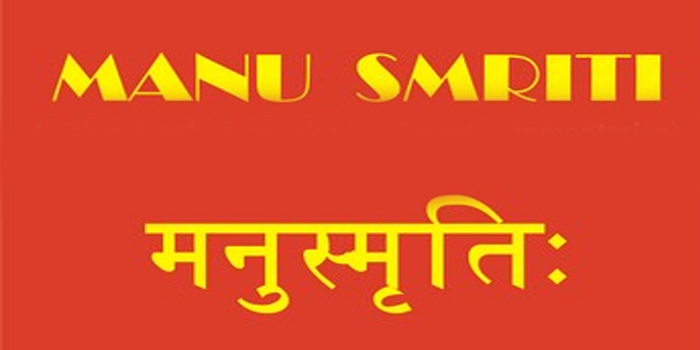Manu Smriti is an ancient law book of the Hindus, going back to the time of the Mahabharata, if not earlier, meaning that its core material is well over two thousand years old. This means that Manu Smriti is comparable in age to the Bible, if not earlier.
Manu Smriti is the most important and influential of the many Dharma Shastras or similar law books from the ancient era, but it is one of many. It offers a set of social rules and customs from that early historical period, including several variant opinions. Mahabharata also gives us a picture of the ancient societies, which had many regional and local variations.
Manu Smriti speaks of the land of the Brahmins as between the two rivers of Kurukshetra, Sarasvati and Drishadvati, which the Geological Survey of India, dried up around four thousand years ago.
In HIndu thought such older law codes are not regarded as scriptures or taken to be literally true, nor do they form any modern law codes for Hindus or for India as a whole. They are looked at much like the ancient law codes in Europe, meaning of historical value, like museum pieces.
Strangely anti-Hindu forces today, particularly Marxist groups, like to quote certain portions of Manu Smriti considered to be out of harmony with modern laws and highlight these to show that Hinduism is a biased and non-progressive religion, including statements from the text restricting women’s roles in society.
This would be like trying to criticize modern European cultures by quoting the law codes of ancient Israel, Rome or Greece as if they characterized European or Christian culture today. While the Sharia generally has a scriptural status in Islam, we cannot equate Manu Smriti with any such Sharia approach.
Similarly, the Book of Leviticus in the Bible has many dubious laws like stoning women to death for adultery. Yet the Jews and Christians who honor the Bible do not accept these laws and have long since modified their own law codes. We do not judge modern Judaism or Christianity according to the Book of Leviticus.
There are many passages in the Manu Smriti also that honor non-violence, truthfulness, yoga practices, mantra and meditation, and which portray a philosophy of consciousness and Self-awareness behind the universe. We should not reduce the text to passages that reflect social mores of its times that we would not follow today.
Hinduism is a pluralistic religion that evolves with the times and is not limited to its ancient law codes. While Manu Smriti may raise some questions as a modern law code, which it was never intended to be, it stands up well as compared with law codes of the era from which it comes. Hinduism emphasizes Yoga and meditation as the main means of arriving at truth, and regards written texts as provisional in nature, requiring right adaptation and application.
In Hinduism the authority of contemporary gurus and realized souls is more important than a literal belief in ancient texts, however valuable these may be. To find out how Hindus view society today, both in India and throughout the world, one should look at modern Hindu gurus over the past two centuries.
This includes Swami Vivekananda, Sri Aurobindo, Ramana Maharshi, Mahatma Gandhi, Chadrashekhar Sarasvati, Swami Sivananda of Rishikesh and Swami Chinmayananda, to mention but a few. Even among these we will find a number of points of view but a common emphasis on the need for Yoga and meditation in order to bring about world peace and a true perception of the universal reality.






























